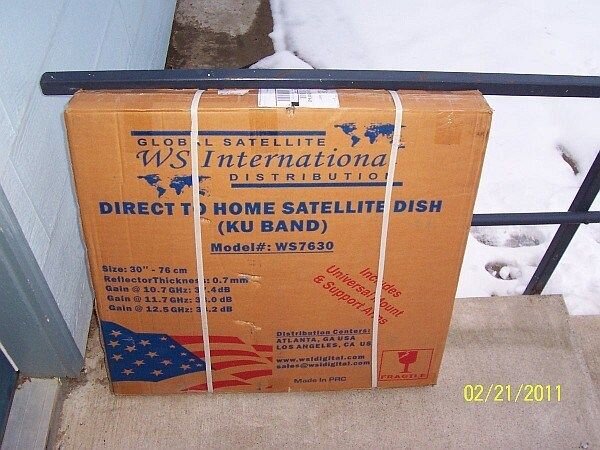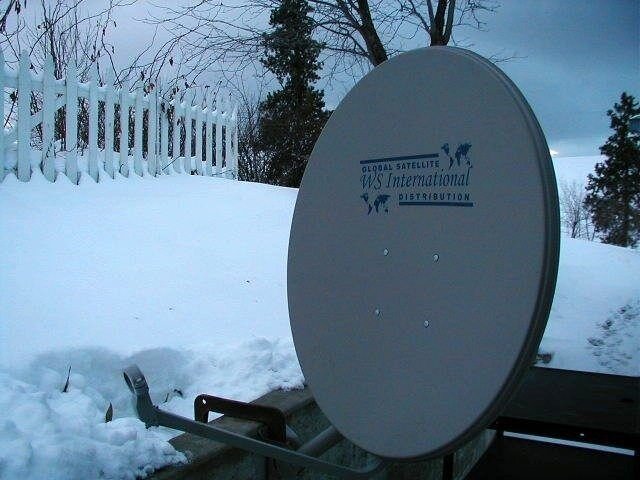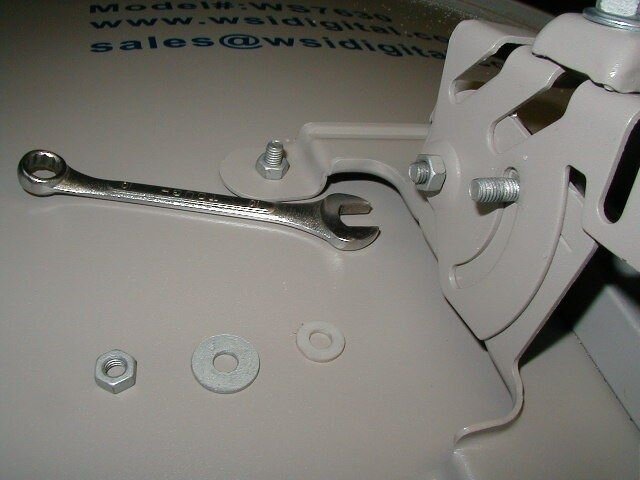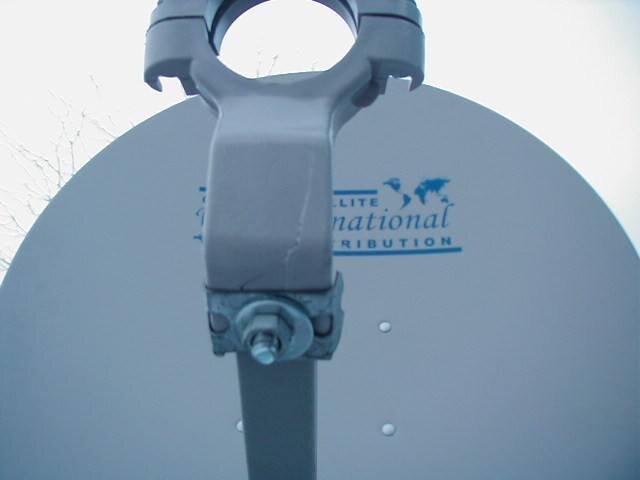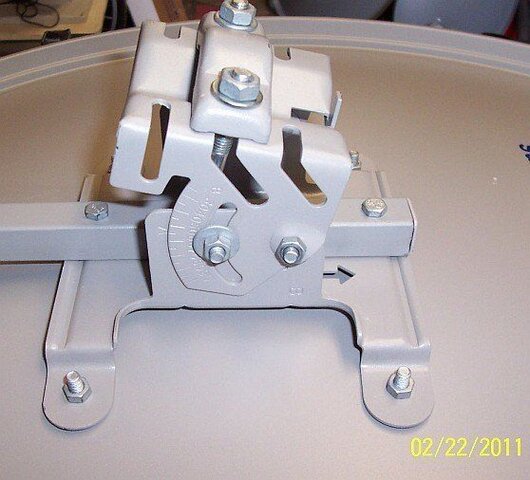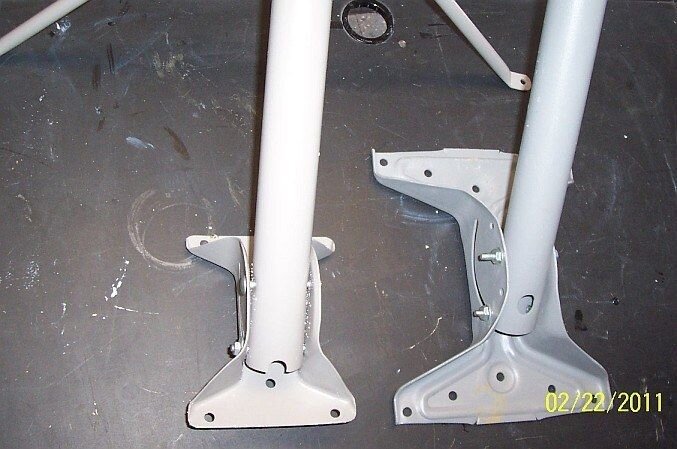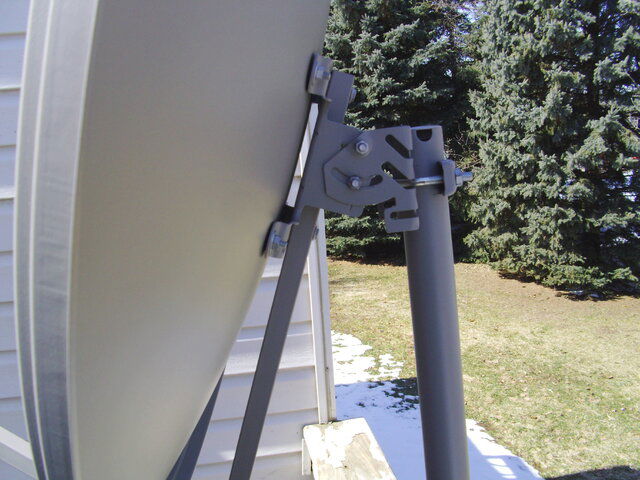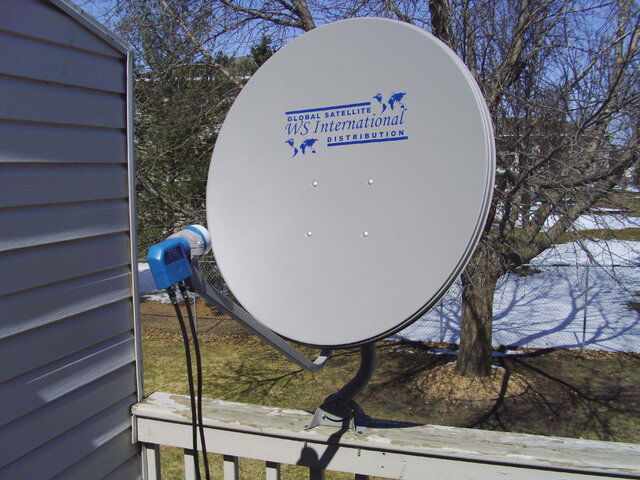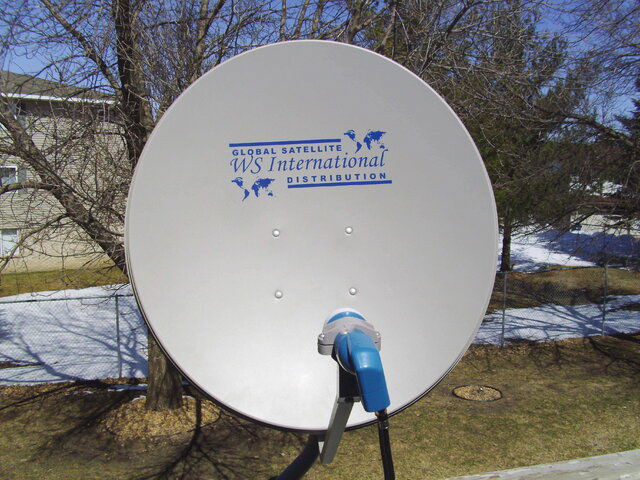This is a review and test of the WSI 7630 75cm Ku dish, comparing it to the Winegard DS-2076 76cm Ku dish.
The WSI measures 75cm x 81cm. The Winegard measures 76cm x 83cm.
Packaging: Very good. Sturdy double-wall cardboard box with form-fitting styrofoam insert.
Instructions: Fair. Exploded view drawing with parts list and brief captions. The Winegard instructions are similar, and no better.
Fasteners: The metric fasteners are all hardened and well plated. Six expanding bolts are included to fasten the mount brackets to your house or other flat surface.
Quality/Durability: All parts are nicely finished and high quality. The edges are smooth and safe to handle. The J-pole mount bracket is lighter than the Winegard, and you will need to use the two extra support arms that are included. The WSI dish is lighter, thinner, and noticeably more flexible than the Winegard.
The plastic LNB holder is a very tight fit on the steel arm where it mounts. I forced it on instead of using a small grinder to open it up a bit, and it cracked in the cold winter temperature. I was able to repair it with a metal strap.
I measured the edge of the dish with a dial caliper and got these readings for dish metal thickness including any plating and finish: WSI .035 inch. Winegard .050 inch.
Both should last a long time in the weather, but the Winegard dish is sturdier and in my opinion will survive higher winds than the WSI.
Adjustment ease and accuracy: The WSI assembly instructions call for small plastic washers to be used under the steel washers where adjustment bolts slide in slotted holes. They are much too slippery, and the dish will not hold adjustment if they are used. The elevation scale was off by several degrees on the example tested. The Winegard elevation scale is accurate.
Performance: Using the same JSC321 standard Ku .2 rated LNBF on both dishes and carefully peaking the signal, the WSI consistently gave 3 points higher signal quality on all transponders when tested on SES1 @ 101w using a Coolsat 6000 and ten feet of RG-6 cable. As one example, the WSI gave 75% Q on 12060H while the Winegard was only able to squeeze out 72%. The WSI dish felt like it had a tighter focus when fine tuning the position.
Conclusion: If you can live with the thinner metal of the dish and mount, omit the slippery plastic washers, and get past the inaccurate elevation scale, the 75cm WSI 7630 Ku dish will deliver significantly higher signal quality than the slightly larger Winegard 76cm dish. But if you have high winds where you live, better spend a little more and get the Winegard.
The WSI measures 75cm x 81cm. The Winegard measures 76cm x 83cm.
Packaging: Very good. Sturdy double-wall cardboard box with form-fitting styrofoam insert.
Instructions: Fair. Exploded view drawing with parts list and brief captions. The Winegard instructions are similar, and no better.
Fasteners: The metric fasteners are all hardened and well plated. Six expanding bolts are included to fasten the mount brackets to your house or other flat surface.
Quality/Durability: All parts are nicely finished and high quality. The edges are smooth and safe to handle. The J-pole mount bracket is lighter than the Winegard, and you will need to use the two extra support arms that are included. The WSI dish is lighter, thinner, and noticeably more flexible than the Winegard.
The plastic LNB holder is a very tight fit on the steel arm where it mounts. I forced it on instead of using a small grinder to open it up a bit, and it cracked in the cold winter temperature. I was able to repair it with a metal strap.
I measured the edge of the dish with a dial caliper and got these readings for dish metal thickness including any plating and finish: WSI .035 inch. Winegard .050 inch.
Both should last a long time in the weather, but the Winegard dish is sturdier and in my opinion will survive higher winds than the WSI.
Adjustment ease and accuracy: The WSI assembly instructions call for small plastic washers to be used under the steel washers where adjustment bolts slide in slotted holes. They are much too slippery, and the dish will not hold adjustment if they are used. The elevation scale was off by several degrees on the example tested. The Winegard elevation scale is accurate.
Performance: Using the same JSC321 standard Ku .2 rated LNBF on both dishes and carefully peaking the signal, the WSI consistently gave 3 points higher signal quality on all transponders when tested on SES1 @ 101w using a Coolsat 6000 and ten feet of RG-6 cable. As one example, the WSI gave 75% Q on 12060H while the Winegard was only able to squeeze out 72%. The WSI dish felt like it had a tighter focus when fine tuning the position.
Conclusion: If you can live with the thinner metal of the dish and mount, omit the slippery plastic washers, and get past the inaccurate elevation scale, the 75cm WSI 7630 Ku dish will deliver significantly higher signal quality than the slightly larger Winegard 76cm dish. But if you have high winds where you live, better spend a little more and get the Winegard.
Attachments
Last edited:



